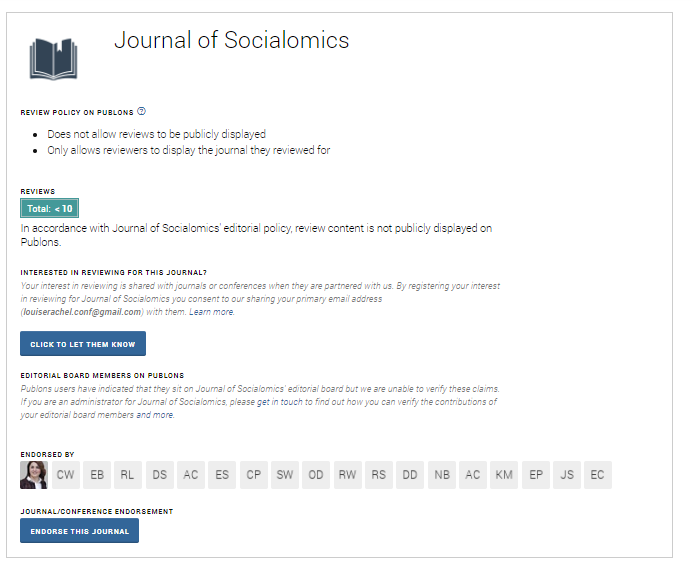Indexed In
- Open J Gate
- Genamics JournalSeek
- SafetyLit
- RefSeek
- Hamdard University
- EBSCO A-Z
- OCLC- WorldCat
- Publons
- Google Scholar
Useful Links
Share This Page
Journal Flyer

Open Access Journals
- Agri and Aquaculture
- Biochemistry
- Bioinformatics & Systems Biology
- Business & Management
- Chemistry
- Clinical Sciences
- Engineering
- Food & Nutrition
- General Science
- Genetics & Molecular Biology
- Immunology & Microbiology
- Medical Sciences
- Neuroscience & Psychology
- Nursing & Health Care
- Pharmaceutical Sciences
Opinion Article - (2025) Volume 14, Issue 2
The Role of Community Gardens in Strengthening Urban Social Networks
Samuel Njoroge*Received: 26-May-2025, Manuscript No. JSC-25-29733; Editor assigned: 28-May-2025, Pre QC No. JSC-25-29733; Reviewed: 11-Jun-2025, QC No. JSC-25-29733; Revised: 18-Jun-2025, Manuscript No. JSC-25-29733; Published: 25-Jun-2025, DOI: 10.35248/2167-0358.25.14.270
Description
Community gardens have become increasingly common in many cities around the world, offering residents a shared space to grow food, connect with neighbors, and engage in collective activity. These green spaces provide more than just fresh produce; they create a social environment where relationships are built, trust is reinforced, and local knowledge is exchanged. Especially in densely populated urban areas, community gardens serve as important hubs for social interaction that may not occur in other public or private spaces.
The act of gardening together encourages cooperation and responsibility. Participants often share tools, seeds, and expertise, learning from one another and adapting practices to local conditions. These exchanges deepen ties among individuals who might otherwise remain isolated. For newcomers or marginalized groups, gardens offer a welcoming venue to enter community life, reducing social distance and fostering a sense of belonging. Over time, these interactions can expand beyond the garden boundaries, influencing other neighborhood initiatives and collaborations.
Community gardens are not uniformly distributed, however. Access depends on available land, municipal policies, and community capacity to organize and sustain projects. In some cities, abandoned lots or underused public areas are transformed into productive gardens through collective effort. Such transformations can improve neighborhood aesthetics, deter crime, and signal local agency. Yet securing tenure and ongoing support remains a challenge, as land use pressures and development interests sometimes threaten these spaces.
The diversity of participants in community gardens often reflects the demographic mix of the surrounding area. These gardens can bring together people across age, ethnicity, socioeconomic status, and language differences. By working side by side, barriers that exist in other social contexts may weaken. Participants report increased understanding of different cultures and perspectives, contributing to social cohesion. This bridging function is particularly valuable in neighborhoods experiencing rapid change or gentrification, where social fragmentation is common.
Beyond social benefits, community gardens contribute to health and well-being. The physical activity involved in gardening promotes fitness, while the availability of fresh fruits and vegetables improves nutrition. Mental health also benefits from outdoor time and connection to nature. These effects are especially important in low-income areas, where access to green spaces and healthy food options may be limited. The gardens serve as sites of resilience amid urban stressors such as pollution, noise, and overcrowding.
Local governments and nonprofit organizations have increasingly recognized the value of community gardens as part of urban development strategies. Funding, technical assistance, and policy support can help overcome initial barriers and improve sustainability. However, top-down approaches risk undermining the grassroots nature of these projects if community voices are sidelined. Successful programs balance external resources with local leadership and decision-making authority.
Technology has begun to influence community gardening as well. Mobile apps and online forums enable gardeners to share information on planting schedules, pest control, and event coordination. Social media platforms allow groups to promote activities, recruit volunteers, and celebrate successes. While digital tools enhance communication, the core of community gardening remains face-to-face interaction, shared labor, and physical presence.
Challenges persist in maintaining enthusiasm and managing conflicts within community gardens. Differences in commitment, cultural expectations, or work styles can lead to disagreements. Effective communication and inclusive decisionmaking processes are essential to navigate these tensions. In some cases, formal agreements or charters are developed to clarify responsibilities and expectations, promoting fairness and accountability.
Conclusion
Community gardens exemplify how shared spaces can generate social capital resources embedded in relationships that facilitate cooperation and collective action. The networks formed through gardening can support other neighborhood goals, such as safety initiatives, cultural events, or local advocacy. These connections enhance the capacity of residents to address common concerns and influence urban policies. As cities continue to grow and change, preserving and expanding community gardens offers a tangible way to strengthen social ties and improve quality of life. These spaces provide opportunities for participation, learning, and mutual support that contribute to vibrant and inclusive urban communities.
Citation: Njoroge S (2025). The Role of Community Gardens in Strengthening Urban Social Networks. J Socialomics. 14:270.
Copyright: © 2025 Njoroge S. This is an open-access article distributed under the terms of the Creative Commons Attribution License, which permits unrestricted use, distribution and reproduction in any medium, provided the original author and source are credited


